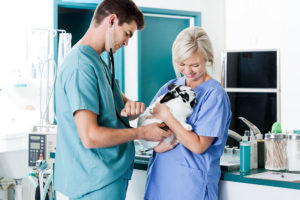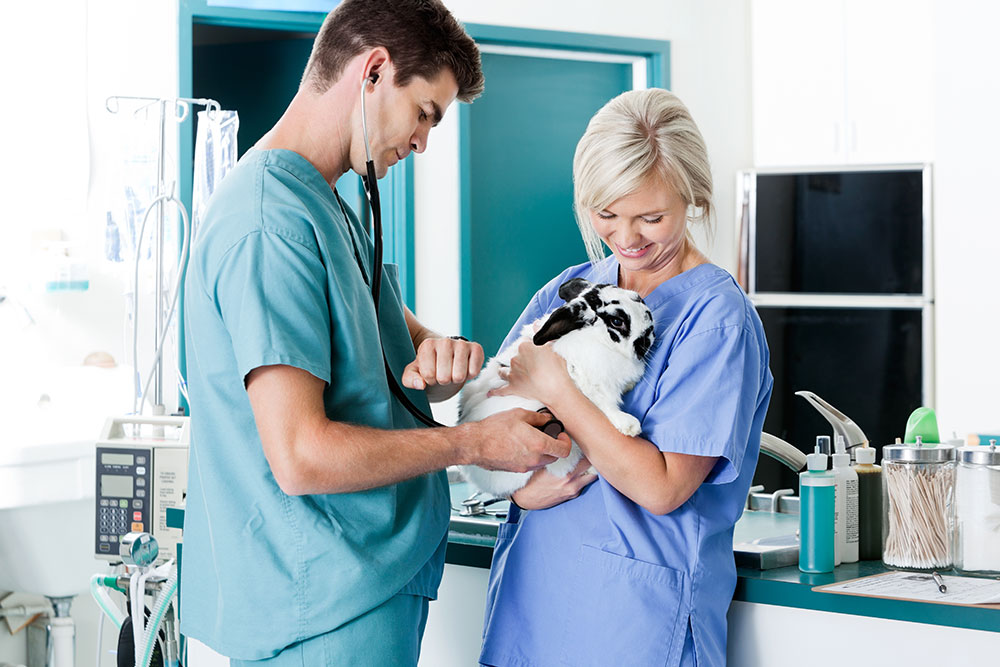Disclaimer: The information on our website is provided for general information purposes only. We make no representations or warranties of any kind, express or implied, about the completeness, accuracy, reliability, suitability or availability with respect to the website or the information contained on our website for any purpose. Any reliance on such information is therefore strictly at your own risk and we are not liable for any damages or losses arising out of or resulting from your reliance on any information contained on our website.
A veterinary technologist (or vet tech) works under the supervision of a licensed veterinarian to help diagnose the illnesses and injuries of animals. They are also responsible to care and handle animals in a humane way. Veterinarians rely on veterinary techs to conduct a variety of procedures such as medical testing, dental care, postoperative care, or specialized nursing. Watch the following video to learn what a veterinary technologist does:
How to Become a Veterinary Technologist
To become a veterinary technologist, you must attain a 4-year bachelor’s degree in veterinary technology. When looking for a Bachelor’s degree, one should look that the program is accredited through the American Veterinary Medical Association (AVMA). This accreditation is the highest standard of achievement for veterinary medical education. AVMA list all school by states. Most program’s curriculum focuses on business and science. This can include but is not limited to coursework such as business management, chemistry, communication, lab instruments, laboratory procedures, mathematics, microbiology, nutrition, parasitology, pharmacology, physiology, radiology and surgical.
You must also pass a credentialing exam and become licensed, registered, or certified depending on the state to which they are employed. In order for you to become certified, you must acquire work experience in a laboratory animal facility and pass the AALAS (American Association for Laboratory Animal Science) examination. Veterinary technologists need strong problem-solving skills, manual dexterity, communication skills, and compassion towards animals.
Job Description of a Veterinary Technologist

Veterinary technologists observe the condition and behavior of animals and restrain animals when necessary. Additionally, they provide emergency first aid to animals and nursing care to injuries for recovering animals. They may even administer anesthesia to animals, collect laboratory samples like urine or blood, and take X-rays.
Vet techs prepare instruments and animals for surgery. They must administer vaccines and medications and treatments to the animals as prescribed by the veterinarian. Keeping the patient’s health history is also an important part of their duties. Some veterinary technologists work in private clinical practices, although many work in more advanced research-related jobs under the supervision of a licensed veterinarian or scientist.
Veterinary technologists often work in laboratories, colleges and universities, and humane societies. Their jobs may be physically or emotionally demanding. Veterinary technologists can witness abused and/or may need to help euthanize sick, injured, or unwanted animals. They frequently work nights, weekends, and holidays. Therefore, one may need to be flexible, due to the scheduling requirements.
Veterinary Technician Career Video Transcript
Veterinary technologists and technicians are the quiet heroes of animal care. These animal health care workers assist veterinarians in diagnosing and treating animals who are hurt or sick. Also called “vet techs, they provide nursing care or emergency first aid, take samples, and run tests in the lab. In the operating room, vet techs administer anesthesia, monitor patients’ vital signs, and assist surgeons in a variety of ways.
The vet tech even acts as a dental hygienist, evaluating animals’ teeth and cleaning them with special equipment. The work can involve lifting heavy animals. It can also be demanding, requiring great patience and empathy. Sick animals are often messy and may bite and scratch when afraid. Sadly, some can’t be helped.
Vet techs are also responsible for administering euthanasia when the veterinarian and family agree it is the kindest treatment option. Veterinary technologists and technicians typically work in private clinics and animal hospitals. Other settings include laboratories, colleges, and universities. Some jobs require evening, weekend, or holiday work hours. Variable schedules are common.
Veterinary technologists usually have a bachelor’s degree in veterinary technology, while veterinary technicians need an associate’s degree in veterinary technology. Both technicians and technologists must become registered, licensed, or certified depending on their state requirements. And while vet techs’ patients can’t say “thank you,” they have other ways to show their appreciation!
Article Citations
Bureau of Labor Statistics, U.S. Department of Labor, Occupational Outlook Handbook, Veterinary Technologists and Technicians.
National Center for O*NET Development. 29-2056.00. O*NET OnLine.
The career video is in the public domain from the U. S. Department of Labor, Employment and Training Administration.

